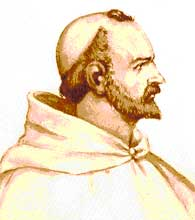The 1000s was a decade of the Julian Calendar which began on January 1, 1000, and ended on December 31, 1009.
The 1160s was a decade of the Julian Calendar which began on January 1, 1160, and ended on December 31, 1169.
Year 1142 (MCXLII) was a common year starting on Thursday of the Julian calendar.
The 1150s was a decade of the Julian Calendar which began on January 1, 1150, and ended on December 31, 1159.
The 1170s was a decade of the Julian Calendar which began on January 1, 1170, and ended on December 31, 1179.
The 1100s was a decade of the Julian Calendar which began on January 1, 1100, and ended on December 31, 1109.
The 970s decade ran from January 1, 970, to December 31, 979.
The 990s decade ran from January 1, 990, to December 31, 999.

Year 1095 (MXCV) was a common year starting on Monday of the Julian calendar.

Year 1187 (MCLXXXVII) was a common year starting on Thursday of the Julian calendar.
The 1180s was a decade of the Julian Calendar which began on January 1, 1180, and ended on December 31, 1189.
The 1110s was a decade of the Julian Calendar which began on January 1, 1110, and ended on December 31, 1119.

Year 1224 (MCCXXIV) was a leap year starting on Monday of the Julian calendar.

Year 992 (CMXCII) was a leap year starting on Friday of the Julian calendar.

Year 1153 (MCLIII) was a common year starting on Thursday of the Julian calendar.

Year 1158 (MCLVIII) was a common year starting on Wednesday of the Julian calendar.

Year 1176 (MCLXXVI) was a leap year starting on Thursday of the Julian calendar, the 1176th year of the Common Era (CE) and Anno Domini (AD) designations, the 176th year of the 2nd millennium, the 76th year of 12th century, and the 7th year of the 1170s decade.

Year 1181 (MCLXXXI) was a common year starting on Thursday of the Julian calendar.

Year 1166 (MCLXVI) was a common year starting on Saturday of the Julian calendar.

Year 1160 (MCLX) was a leap year starting on Friday of the Julian calendar.











